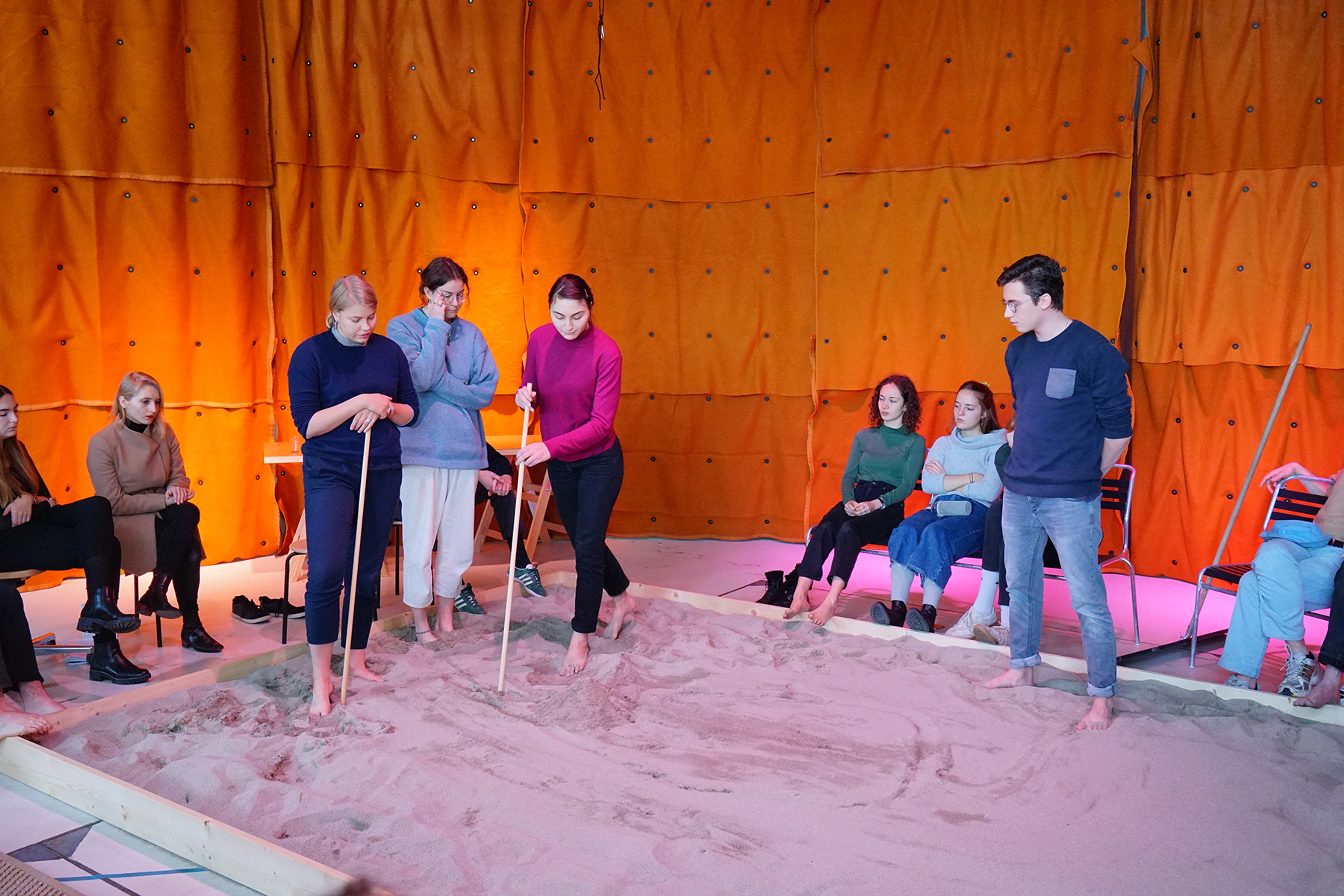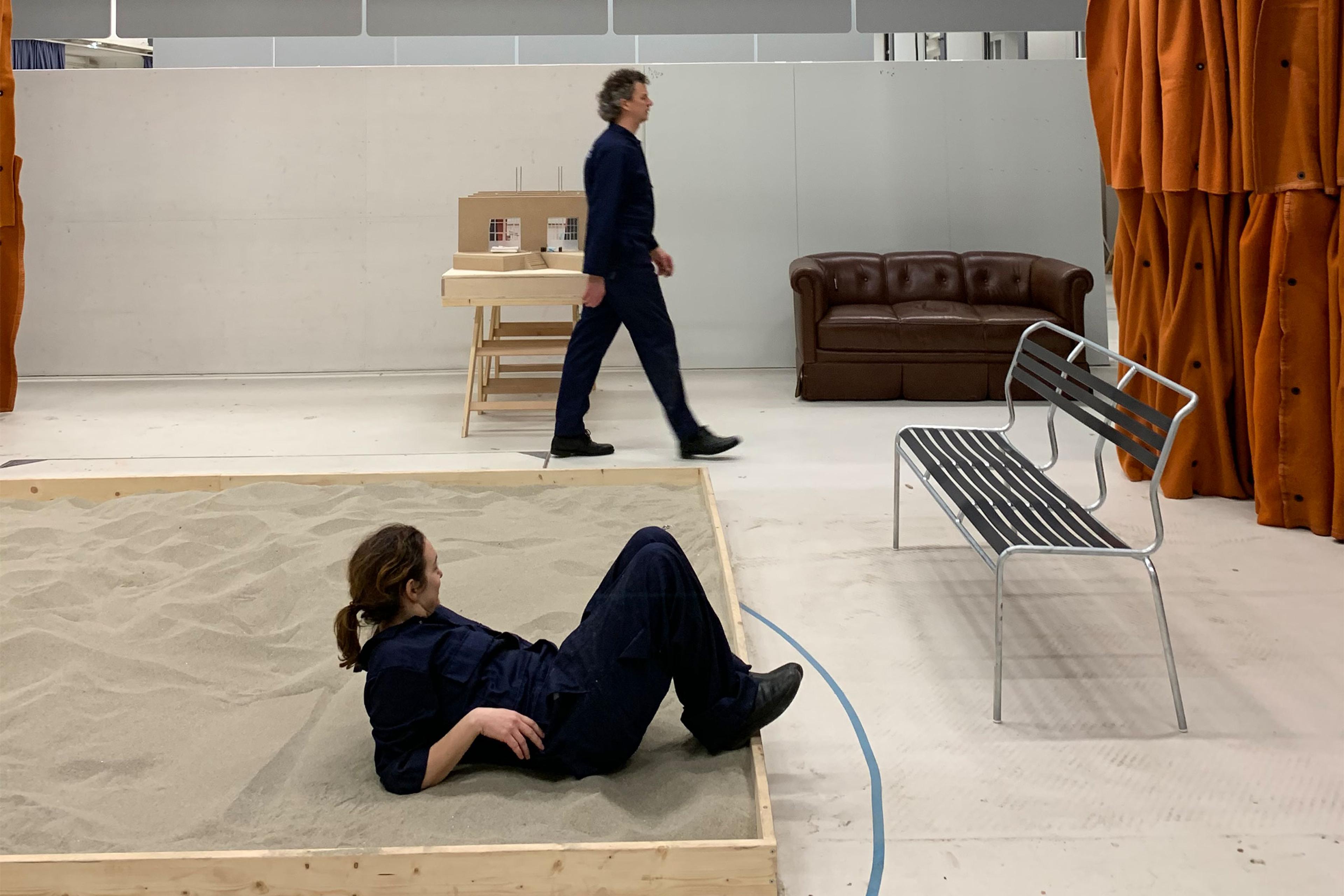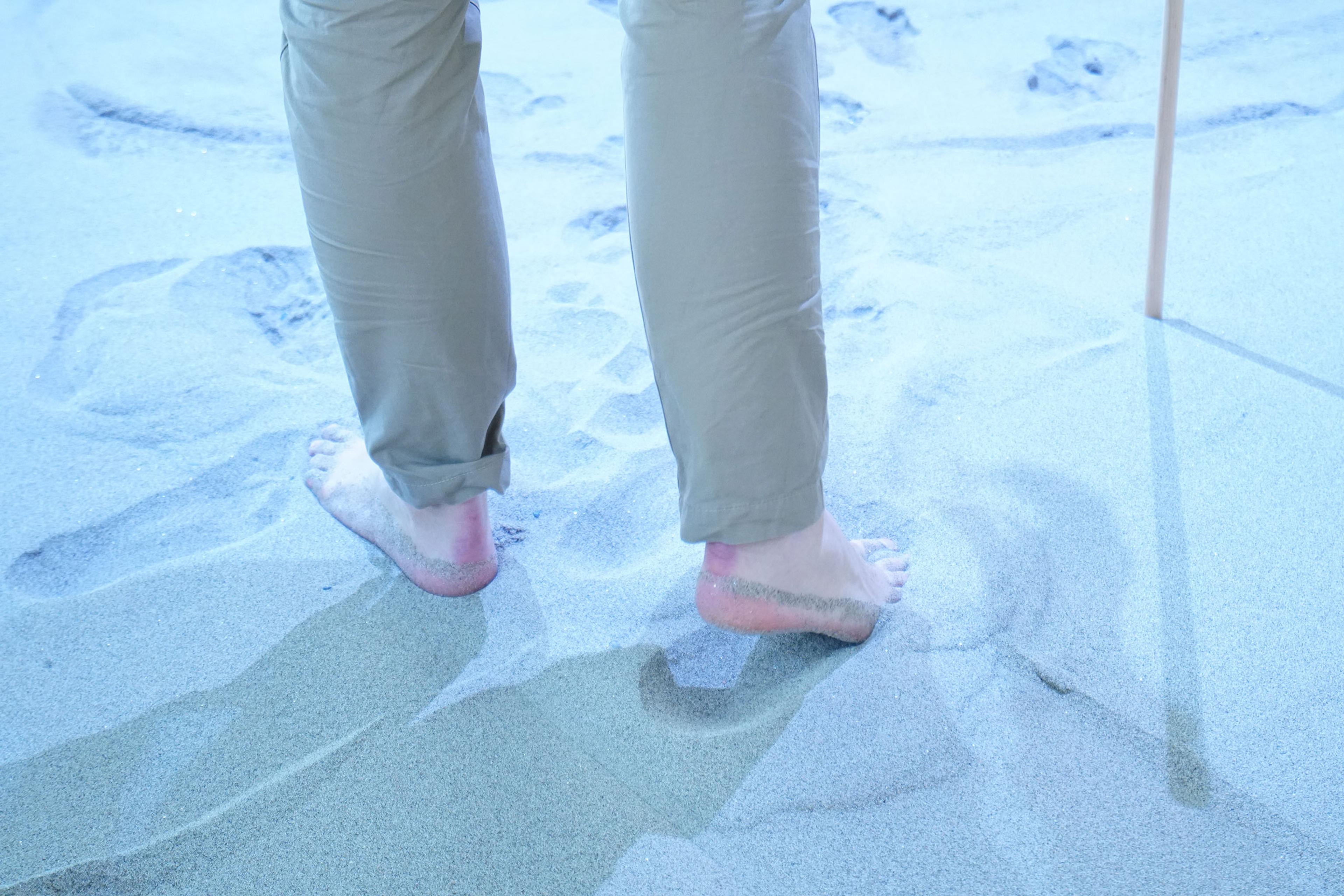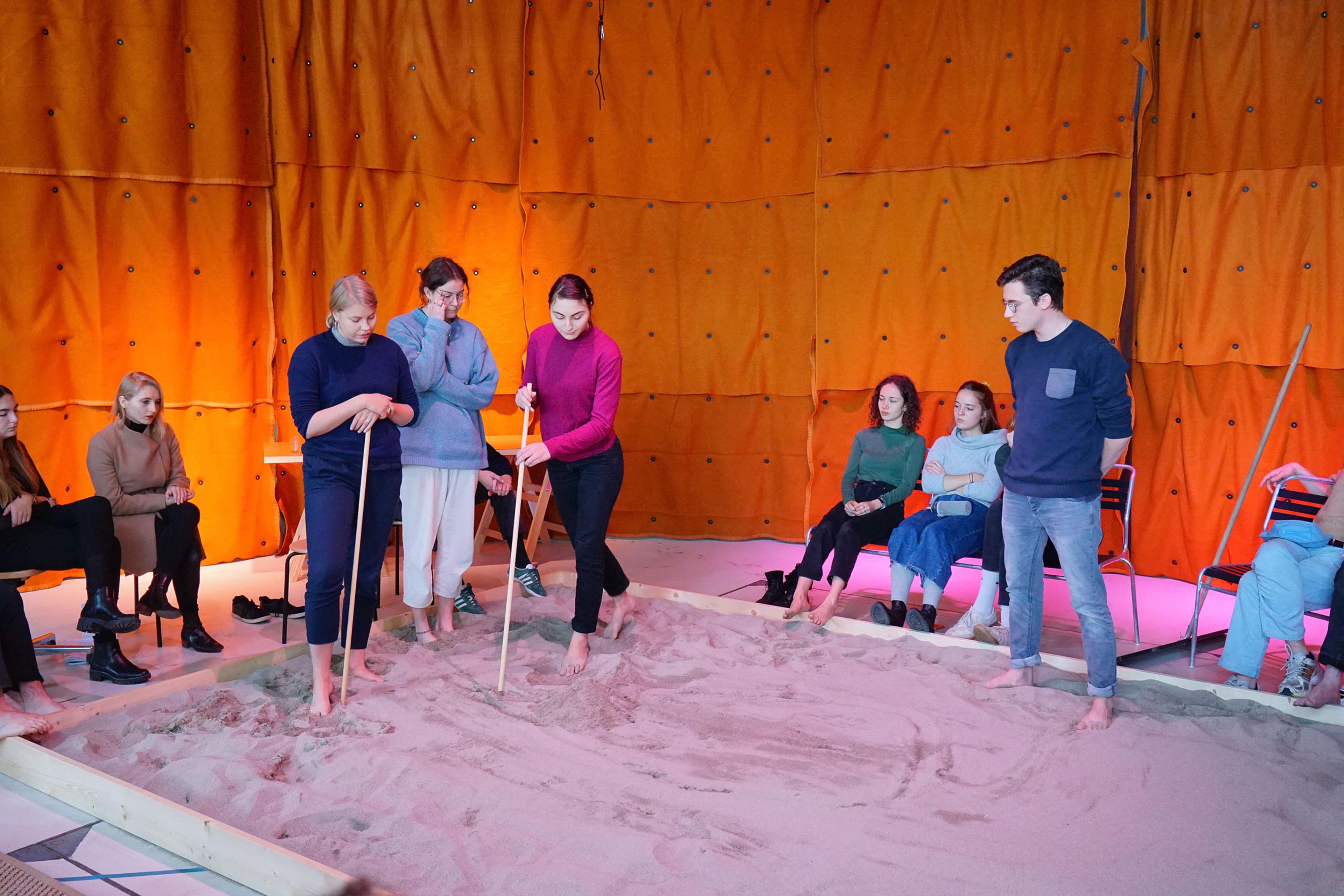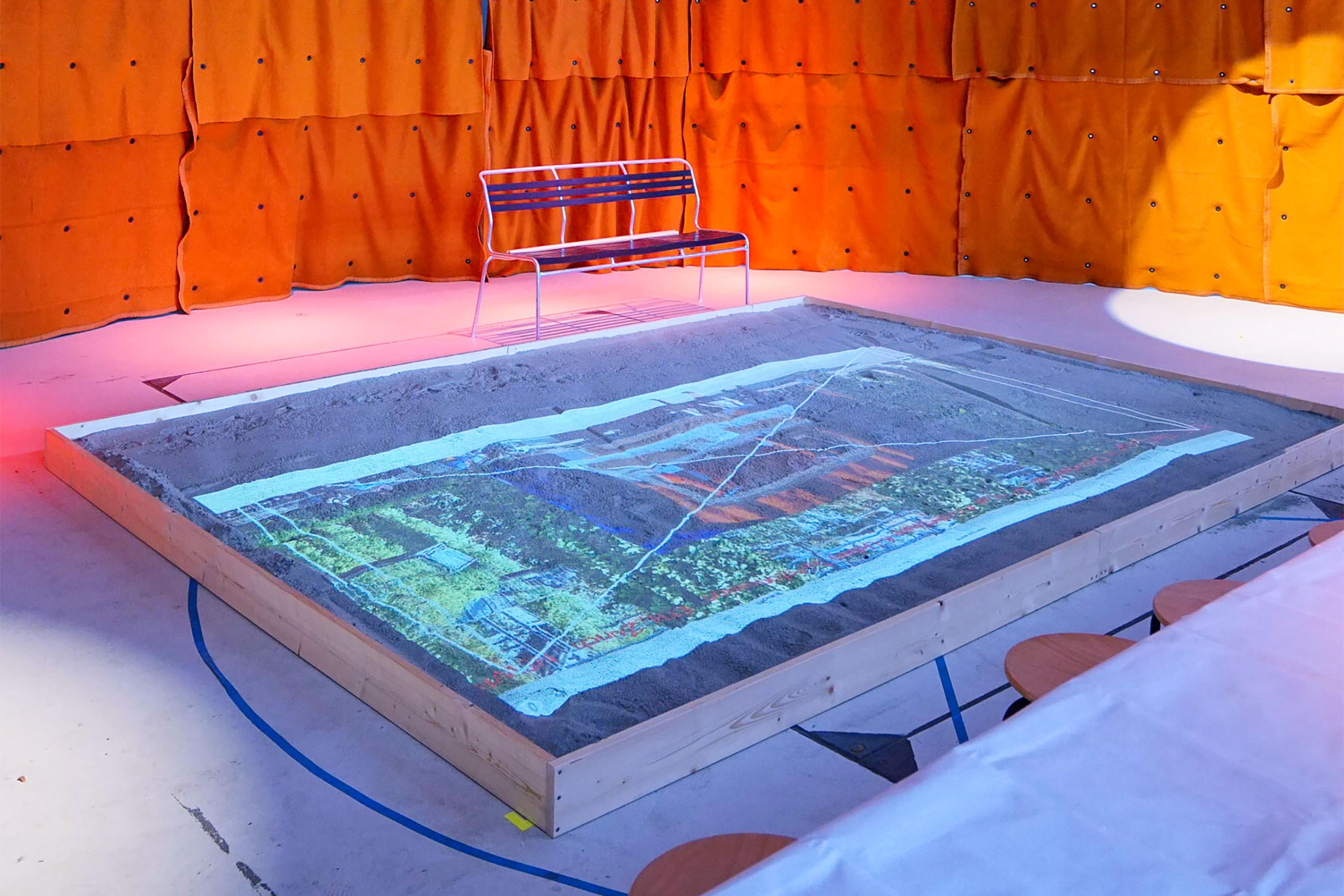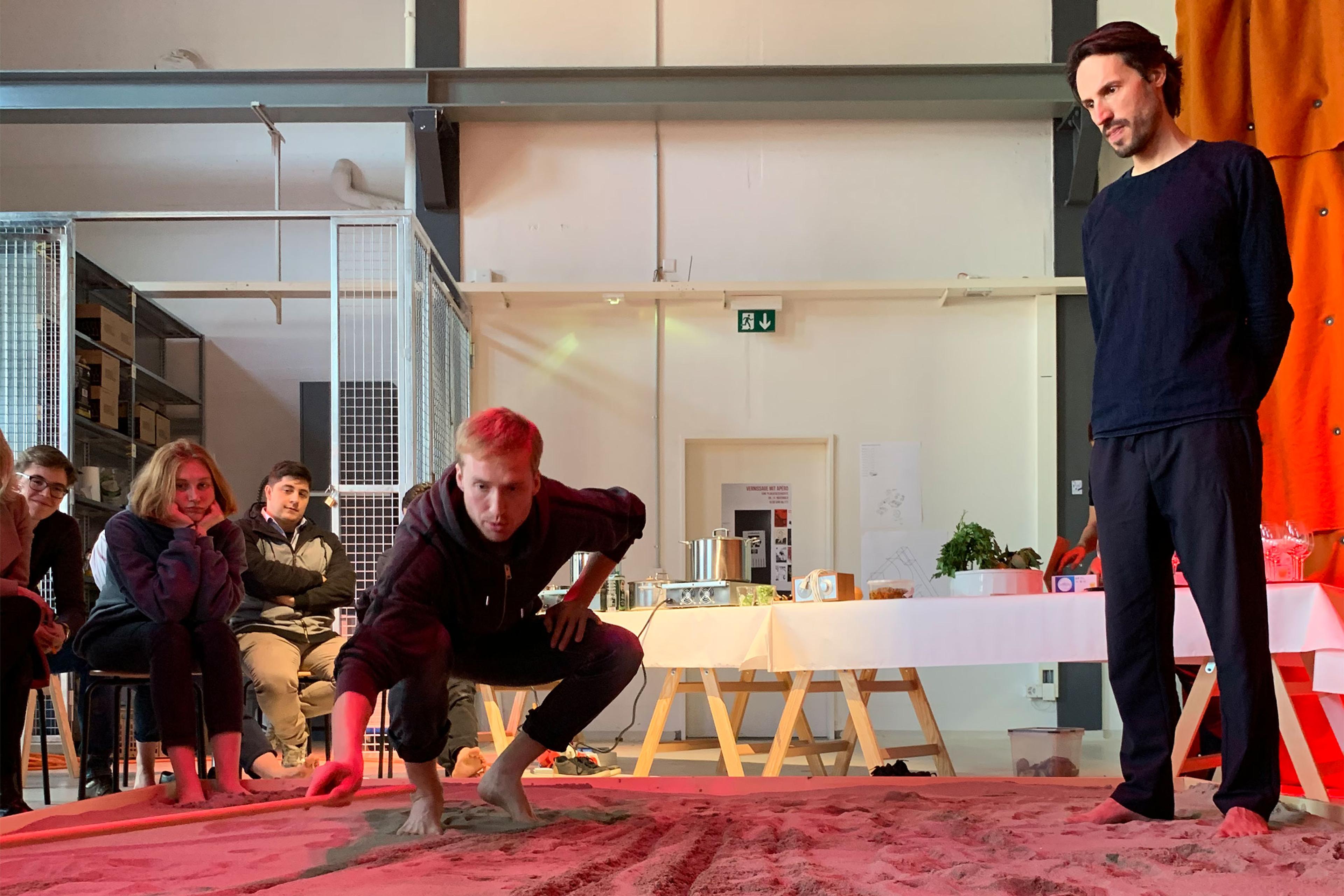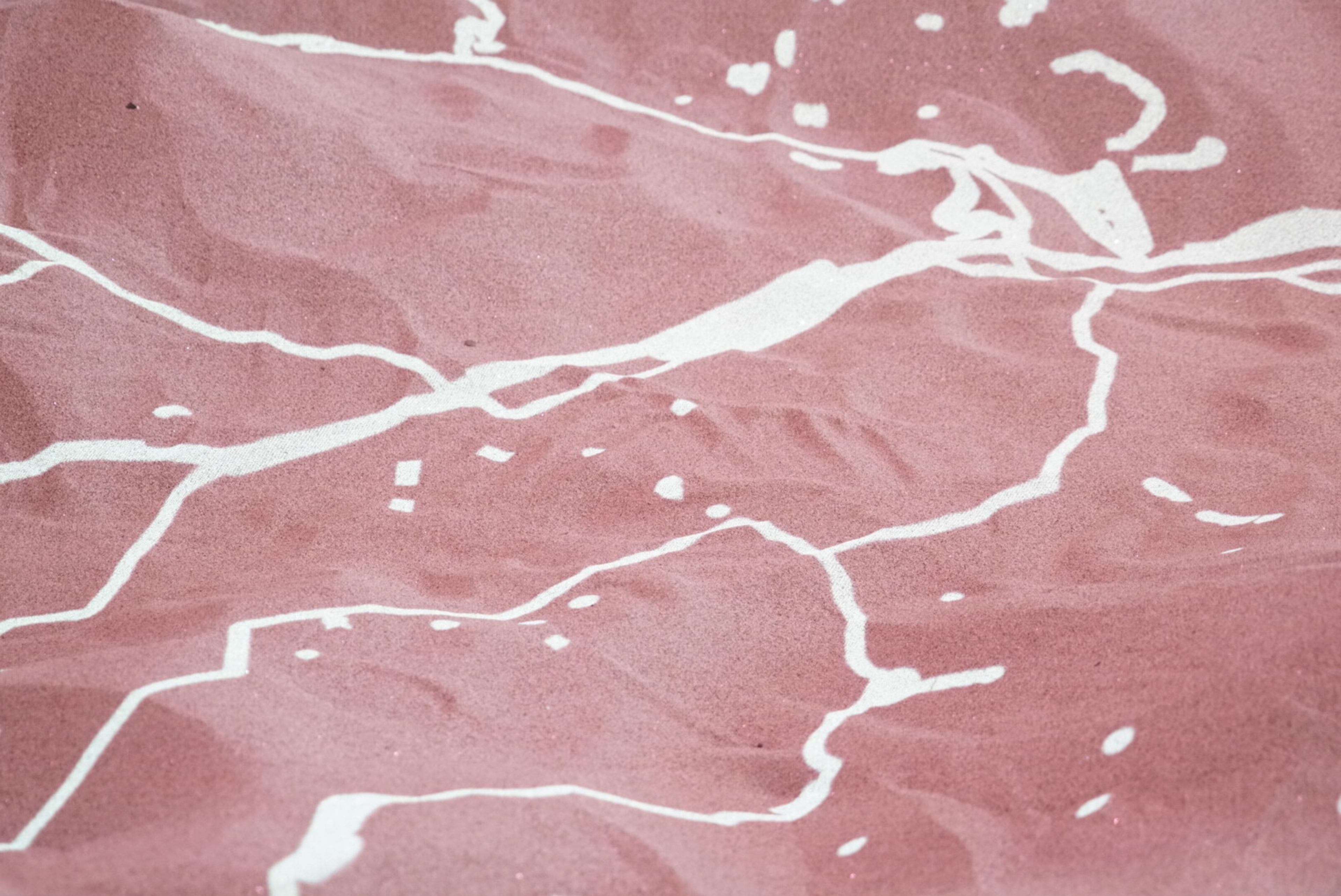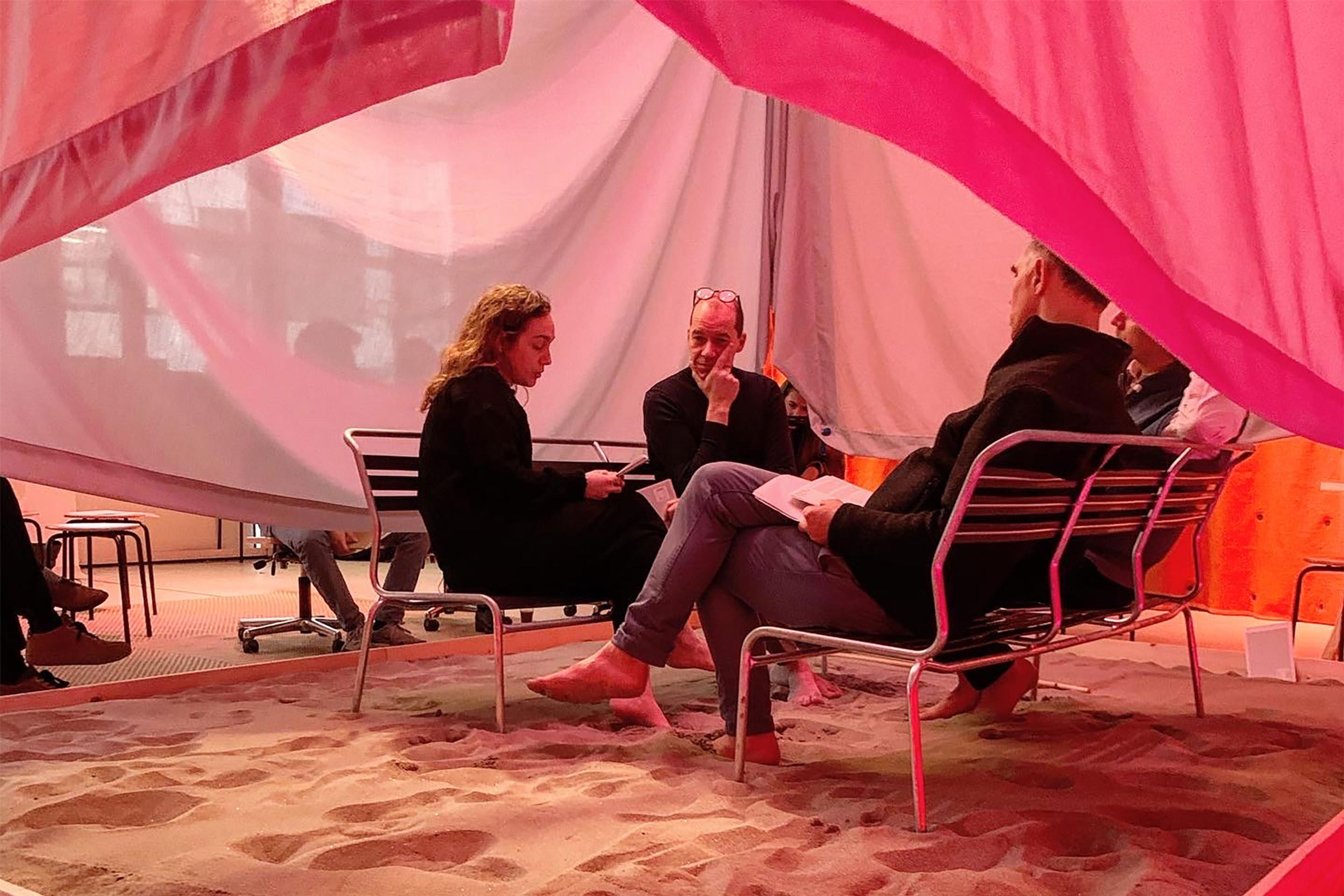The Sandbox
Description
The Sandbox is an expression of our Design in Dialogue philosophy and provides an informal space for playful interaction and discussion. As an object itself the sandbox consists of a simple timber frame, measuring three by four meters, filled with sand. Situated in the middle of the space, in our case the Design in Dialogue Lab, framed by the large curtain, and put in the spotlight by a suspended lighting rig, the sandbox becomes a true stage. The only additional props are a wooden stick to draw in the sand and a rake to erase everything.
By drawing with the stick in the sand, the sandbox serves as a collective and room-sized sketchbook and an arena for discussion and exchange. Serving as a blank canvas, it invites students and stakeholders to project their ideas onto it by only using a stick and their hands to shape the sand and thus unlock a field of endless possibilities.
Context
We developed the format of the sandbox in the design studio on Schaerbeek Formation. The site we were dealing with had become a kind of terrain vague, left to itself. A group of students introduced the metaphor of the sandbox, referring both to the indeterminate nature of the site and to the abundance of possible development options. We took them at their word and built a 1:1 sandbox in the Design in Dialogue Lab.
In the following Design in Dialogue Session, on the theme of positioning, students developed their first project briefs. The session was intended to help them pause for a moment to return to their original idea and reconsider the stance they had taken. The sandbox was intended to help clarify their project by allowing them to represent the core idea with minimal means. Aside from the obviously temporary nature of the means (written in sand rather than set in stone) the sandbox encouraged intuitive interactions and playful negotiations.
Later, the sandbox was re-installed at the 1.5 project space in the CCN building, next to the Brussels North train station. The 1.5 project space was set up by LabNorth, an open network of organizations involved in the Brussels North District including 51N4E. From September 2020 till July 2021 1.5 was experimenting with temporary occupation and different event types. The space of 500 m² wants to serve as a connecting, meeting space for all these different users and at the same time incubate urban functions that are currently missing in this area.
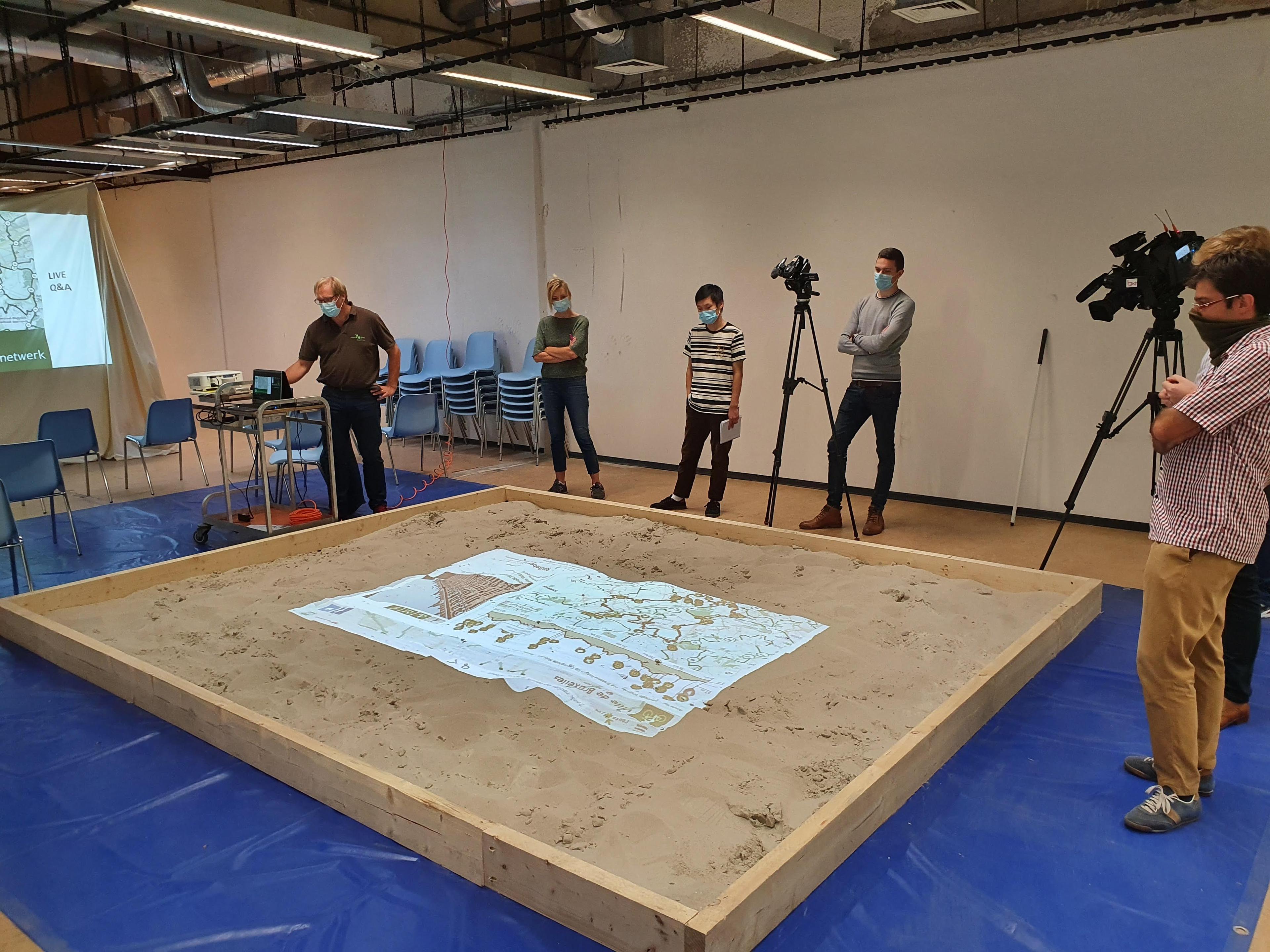
Re-installment of sandbox in 1.5 project space in Brussels.
How to Use
One after another, all students present their project idea by sketching it in the sand and perform their position. External guests, teaching staff and other students are invited to enter the sandbox as well, and to react in the same way and with the same means. The seemingly trivial (but surprisingly levelling) rule that they can do so only after taking off their shoes, can help to create a more equal mode of discussion. Everyone who steps into the sand and takes the drawing stick has to consider how to deal with their predecessor’s drawing: Do you add and change or do you erase everything and start from scratch?
The sandbox can help to create a central stage, however, for some students and even guests, the accentuated centrality and theatrically that focused attention on individual action can become intimidating, almost paralyzing. This is an aspect which needs special precautions.
Next to the sandbox there is no additional material to explain the project, which helps to discuss core ideas and positions. In our case, we afterwards moved to a separate room where the projects, presented in an exhibition-like display, were discussed in more detail.
Credits
[Date] Fall 2019
[Place] Design in Dialogue Lab
[Design] Students and Student Team
[Material] Wood, Sand
[Size] 3m x 4m
[Studio team] Seppe De Blust, Lukas Fink, Falma Fshazi, Evelyne Gordon, Michiel van Iersel, Freek Persyn, Ben Pohl, Charlotte Schaeben
[Students] Takuma Akaki, Liam Buffat, Gjoke Daka, Béla Dalcher, Lucie Delacoste, Sereina Fritsche, Wiebke Gude, Lea Hartmeyer, Moritz Köhler, Marco Landert, Alissa Luks, Vasco Medici, Thorben Müller, Patricia Pervan, Nathalie Reiz, Julian Rickenbacher, Zoé Rüttimann, Matthieu Schwartz, Aleksandra Skop, Marco Steinacher, Fabian Theiler
